Module 2 – Emotional Intelligence (EQ)

LLM Online
©Arlene R. Taylor, PhD
Module #2 — Emotional Intelligence (EQ)
Emotional intelligence is not the opposite of intelligence, it is not the triumph of heart over head—it is the unique intersection of both.
—David Caruso
Module 2
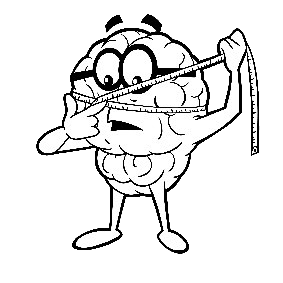 Weigh yourself in your underwear or clothes that you will wear each week on the same scales—no belt, shoes, sweater, or jacket.
Weigh yourself in your underwear or clothes that you will wear each week on the same scales—no belt, shoes, sweater, or jacket.- Measure your waist around the level of your belly button.
- Calculate your Body Mass Index using the BMI chart. Use your height in centimeters.
- Record data on the Weekly Comparison form.
- Write in your own goal on the Daily Goals form.
- Post it where you can see it easily. Record your data each day.
I cannot always control what goes on outside. But I can always control what goes on inside.
—Wayne Dyer, PhD
Overview
| We are injured and hurt emotionally, not so much by other people or what they say and do not say, but by our own attitude and our own response. --Maxwell Maltz, MD |
According to researcher Candace B. Pert, PhD, both the brain and body are part of the subconscious, faithfully recording and reporting chemical processes that enter your conscious awareness only as you recognize them as emotions. A specific neuropeptide (molecules used by neurons to communicate with each other) may be associated with each emotion so you that can experience only one Core Emotion at a time—although you can rapidly alternate between them. When in the grip of a strong emotion, you are in a biochemically altered state.
Emotional Intelligence or Emotional Quotient (EQ) is not an emotion in and of itself. Rather, EQ is a label for a set of developed skills in at least five areas that are designed to help you manage emotions effectively and successfully. The skills are these:
- Identifying emotions quickly and accurately
- Understanding emotions and the message each is trying to convey
- Regulating emotions effectively
- Using emotions successfully
- Choosing appropriate actions and behaviors that will result in positive outcomes
In the mid-1990s, Daniel J. Goleman, PhD, was one of the first to make research about EQ accessible to the public.
| I cannot always control what goes on outside. But I can always control what goes on inside. —Wayne Dyer, PhD. |
Since then others have contributed. Dawson Church has been quoted as saying, “The scientific world is having to rethink its priorities as it discovers that invisible human emotions have profound epigenetic effects.” You may recall from listening to the audio clip in the “Getting Started” section, that genetics contributes about 30 percent to your health and wellness.  Epigenetics which is everything else including your lifestyle, contributes about 70 percent to your health and wellness. EQ is part of that 70 percent. Developing Emotional Intelligence skills is one way to become wiser. Metaphorically, each morning you start with a new iPad. What behaviors will it show today?
Epigenetics which is everything else including your lifestyle, contributes about 70 percent to your health and wellness. EQ is part of that 70 percent. Developing Emotional Intelligence skills is one way to become wiser. Metaphorically, each morning you start with a new iPad. What behaviors will it show today?
Emotional Intelligence is the foundation of leadership. It balances flexibility with toughness, vision with passion, compassion with justice.
—Amit Ray

Reminder: Drink a glass of water. View the Educational Video. Stand and walk in place for at least a portion of the video to increase blood flow to your brain.
Science in a Nutshell
 Of your 30,000 genes or so, about 500 contribute to your Intelligence Quotient—your IQ. IQ represents skills related to academic intelligence, of which perhaps 50-80% is inherited from your biological parents.
Of your 30,000 genes or so, about 500 contribute to your Intelligence Quotient—your IQ. IQ represents skills related to academic intelligence, of which perhaps 50-80% is inherited from your biological parents. 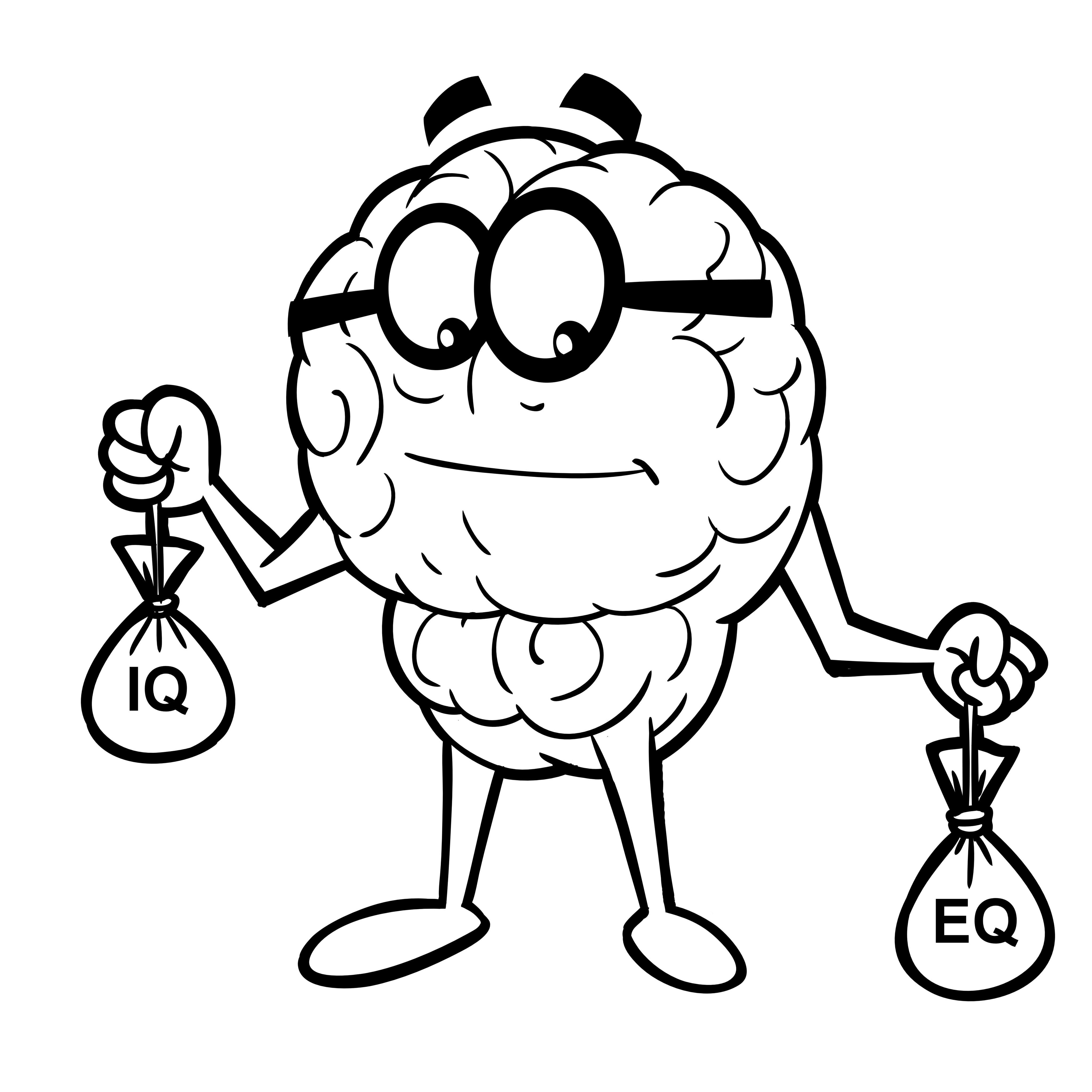 Environment and choice also contribute. A range and not a static number, your IQ can potentially be raised by 5-30 points depending on where you start. Estimates are that it contributes about 20 percent to your SQ (Success Quotient) or overall success in life.
Environment and choice also contribute. A range and not a static number, your IQ can potentially be raised by 5-30 points depending on where you start. Estimates are that it contributes about 20 percent to your SQ (Success Quotient) or overall success in life.
- Emotional Quotient skills are not inherited. They are built one at a time by each individual—or not. Estimates that EQ contributes about 80% to your SQ. It is quite clear that EQ is vastly more important in terms of relationships—personal and professional—and overall success in life than IQ. Here is the formula: IQ + EQ = SQ. Adding percentages for IQ and EQ, the formula looks like this: 20% + 80% = 100%. You may want to spend some time and effort raising your IQ. Realize, however, that building EQ skills gives you the most bang for your buck. According to Gunjan Bugde, Emotional Quotient is more important for one's success than the Intelligence Quotient.
- Brain—This cut-away of the brain shows the three brain layers separated, along with some of the brain functions that are housed in each section. The 1st and 2nd layers are subconscious; so also an estimated 80 percent of the 3rd The frontal lobes of the neocortex create one’s “feelings” from its interpretation of what the emotion means and modulates the express of the emotion.
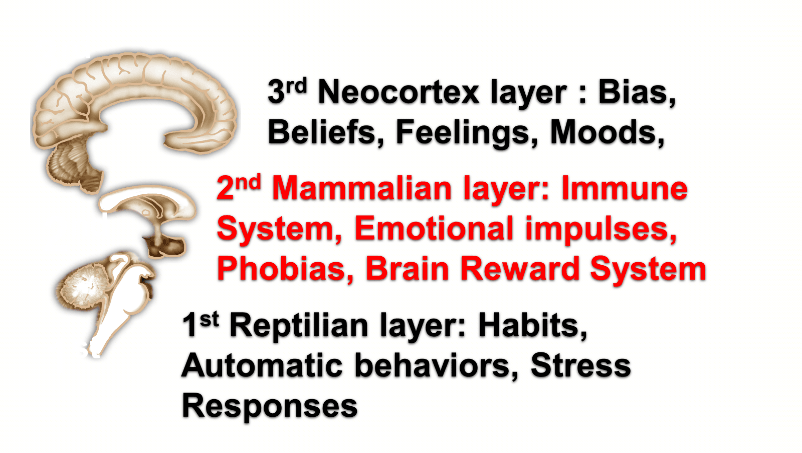
The words emotions and feelings are often used interchangeably as synonyms. In fact, they represent two biologically different concepts. Emotions and feelings are mediated by two distinct neuronal systems and follow different pathways through the brain.
—The Lancet Neurology, March 2004
Matter of Fact
1st –
| Any person capable of angering you becomes your master. —Epictetus |
Emotional Intelligence or Emotional Quotient (EQ) is the label for a set of skills to designed help you manage emotions, feelings, and relationships—vitally important to success in every area of life, both personal and professional.
Four Core Emotions have been observed on the face of a fetus during a uterine scan: Joy, Anger, Sadness, and Fear. PET scans have shown that Joy lights up the brain’s left hemisphere. The other three Core Emotions are “protective” emotions and light up the right hemisphere. Each emotion is designed to alert you to specific situations in life.
 Joy - A signal that life is basically going well and/or a choice to respond in a specific way. Joy provides energy to live life to its fullness. Without Joy you may be unable to become the balanced, contented, productive individual you were intended to be. Pseudo (false) joy can lead to addictions, obsessions, compulsions, a sense of unreality, frustration, and even depression. Euphoria represents a brief episode of intense Joy. The straight-line Euphoria requires some type of addictive process that triggers the Brain Reward System. Neither brain nor body was designed to “live” at Euphoria, as it tends to be too hard on the system.
Joy - A signal that life is basically going well and/or a choice to respond in a specific way. Joy provides energy to live life to its fullness. Without Joy you may be unable to become the balanced, contented, productive individual you were intended to be. Pseudo (false) joy can lead to addictions, obsessions, compulsions, a sense of unreality, frustration, and even depression. Euphoria represents a brief episode of intense Joy. The straight-line Euphoria requires some type of addictive process that triggers the Brain Reward System. Neither brain nor body was designed to “live” at Euphoria, as it tends to be too hard on the system.
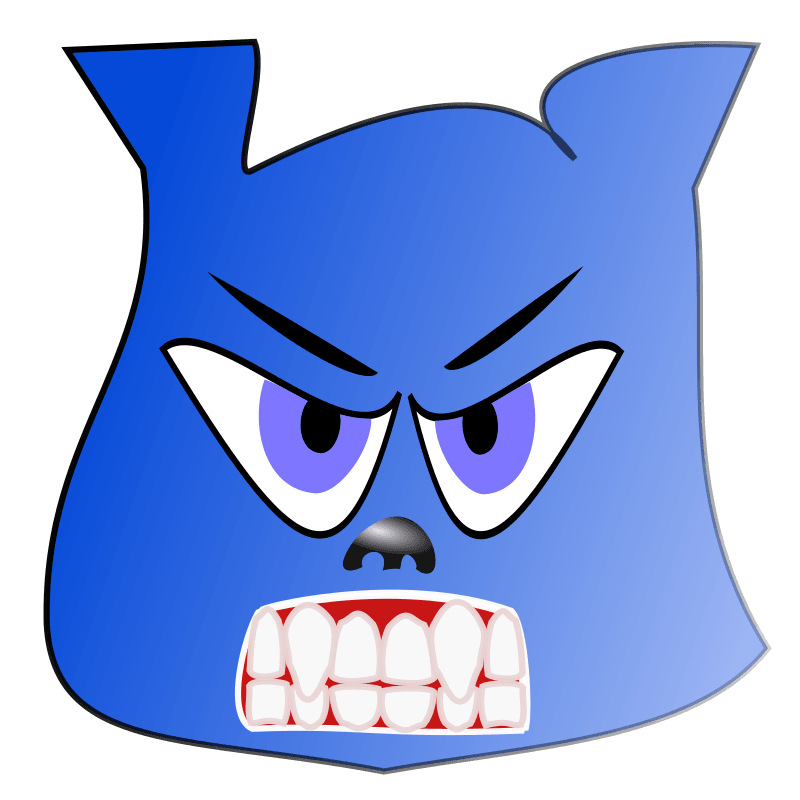 Anger - A signal that one or more of your boundaries has been invaded. It provides energy to create, implement, reassess/reset appropriate personal limits, and maintain bona fide boundaries. Without Anger you may lack the motivation and energy to take appropriate corrective action, or you may become complacent and begin to tolerate the intolerable. Unmanaged Anger can lead to bitterness, illness, injury, and even death.
Anger - A signal that one or more of your boundaries has been invaded. It provides energy to create, implement, reassess/reset appropriate personal limits, and maintain bona fide boundaries. Without Anger you may lack the motivation and energy to take appropriate corrective action, or you may become complacent and begin to tolerate the intolerable. Unmanaged Anger can lead to bitterness, illness, injury, and even death.
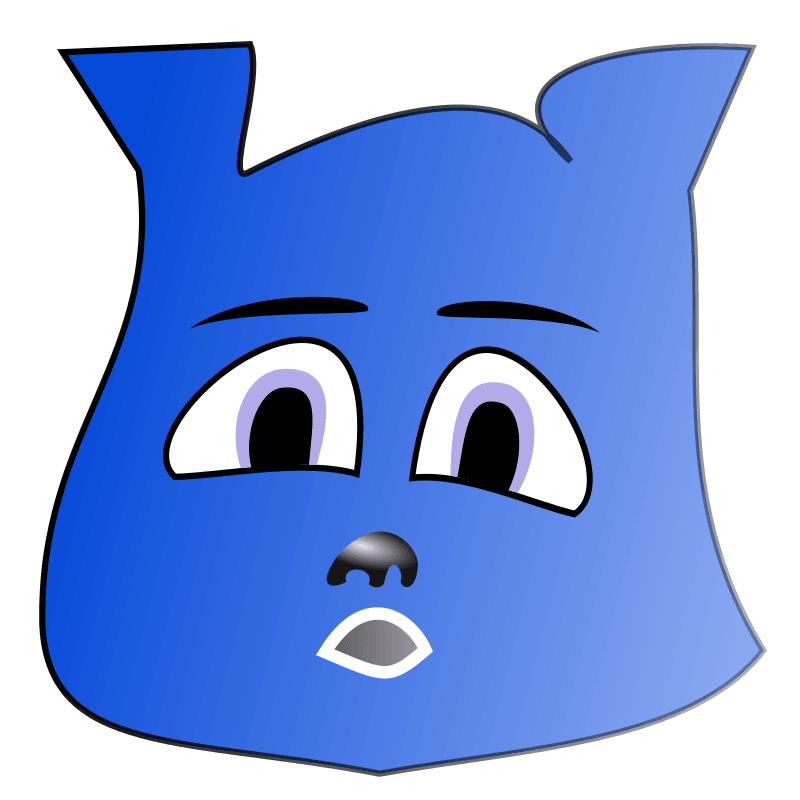 Fear – A signal that you face some type of danger. It provides energy to take appropriate action for you and/or for others. Without Fear you may be unable to protect yourself. Imagined Fear can create the same brain-body responses as fear due to actual danger. Unmanaged Fear can kill ideas, undermine confidence, and escalate into phobias and/or immobilization.
Fear – A signal that you face some type of danger. It provides energy to take appropriate action for you and/or for others. Without Fear you may be unable to protect yourself. Imagined Fear can create the same brain-body responses as fear due to actual danger. Unmanaged Fear can kill ideas, undermine confidence, and escalate into phobias and/or immobilization.
 Sadness – A signal that you have experienced some type of loss—real or imagined. It provides energy to grieve losses, heal woundedness, and recover (feel better). Without Sadness you may fail to recover from your losses and/or grieve successfully. (You may or may not shed tears.) Unmanaged Sadness can suppress immune system function, decrease levels of serotonin, and lead to depression and/or immobility and apathy.
Sadness – A signal that you have experienced some type of loss—real or imagined. It provides energy to grieve losses, heal woundedness, and recover (feel better). Without Sadness you may fail to recover from your losses and/or grieve successfully. (You may or may not shed tears.) Unmanaged Sadness can suppress immune system function, decrease levels of serotonin, and lead to depression and/or immobility and apathy.
Emotional processes operate at a much higher speed than thoughts, and often bypass the mind’s linear reasoning process entirely.
—Joseph LeDoux
2nd –
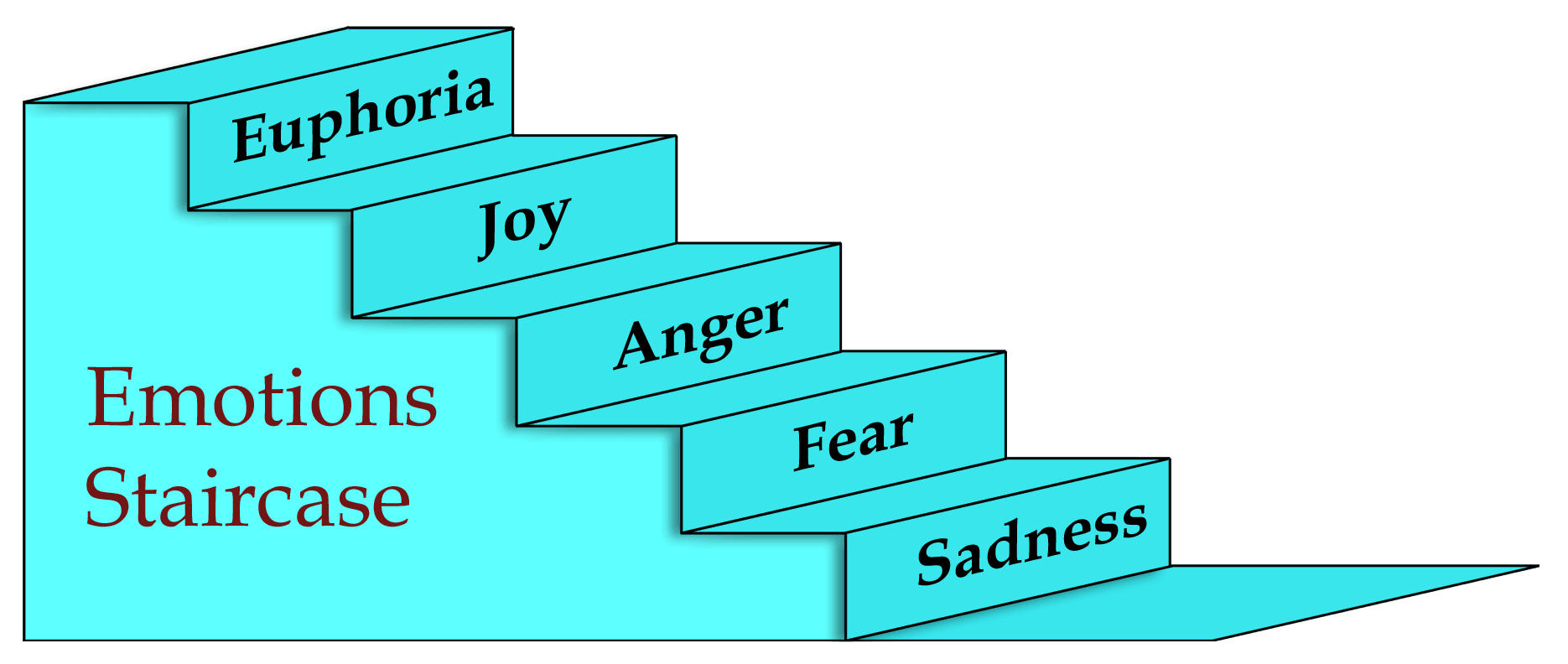 The Emotions Staircase portrays the four Core Emotions along with Euphoria (extreme joy). All Core Emotions are positive, even though the behaviors exhibited around them may be quite negative. Joy is the only emotion with no negative consequences when maintained over time. Anger, Fear, and Sadness all have negative consequences when maintained over time, such as immune system suppression. Perhaps from socialization, males and females generally tend to identify primarily with Anger or Sadness.
The Emotions Staircase portrays the four Core Emotions along with Euphoria (extreme joy). All Core Emotions are positive, even though the behaviors exhibited around them may be quite negative. Joy is the only emotion with no negative consequences when maintained over time. Anger, Fear, and Sadness all have negative consequences when maintained over time, such as immune system suppression. Perhaps from socialization, males and females generally tend to identify primarily with Anger or Sadness.
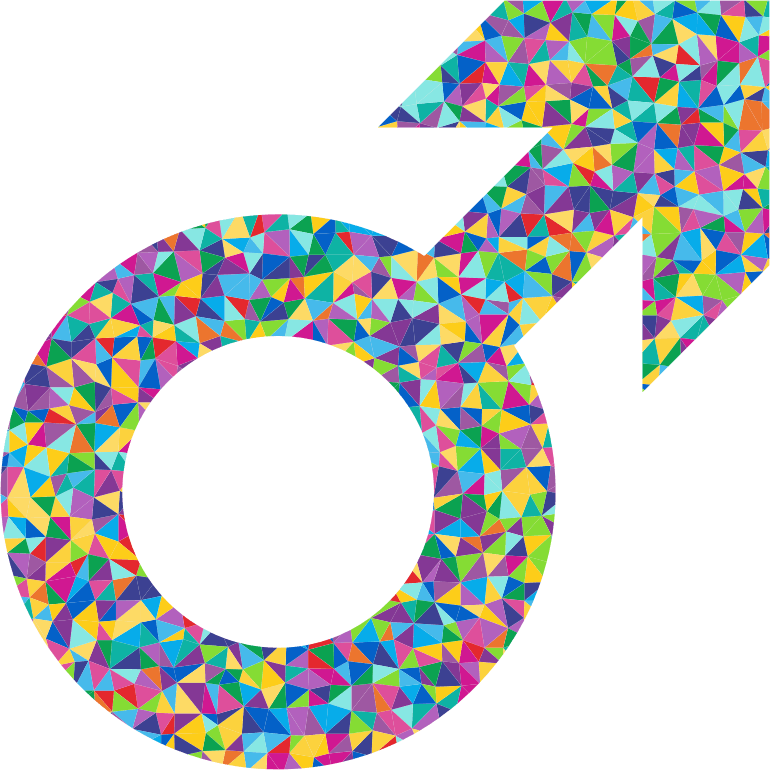 Males tend to identify with Anger when the emotions of Anger, Fear, or Sadness arise, although they may briefly recognize Fear and then move to Anger.
Males tend to identify with Anger when the emotions of Anger, Fear, or Sadness arise, although they may briefly recognize Fear and then move to Anger.
 Females tend to identify with Sadness when the emotions of Sadness, Fear, or Anger arise, although they may briefly experience Anger. Misidentification of an emotion will often result in the person taking inappropriate action.
Females tend to identify with Sadness when the emotions of Sadness, Fear, or Anger arise, although they may briefly experience Anger. Misidentification of an emotion will often result in the person taking inappropriate action.
This can be a problem in relationships (e.g., a child dies) when the female goes to Sadness and can get stuck there.  The male goes to Anger because he perceives his fix-it brain was unable to prevent or resolve the loss, whether a rational expectation or not.
The male goes to Anger because he perceives his fix-it brain was unable to prevent or resolve the loss, whether a rational expectation or not.
Women, on average, tend to be more aware of their emotions, show more empathy, and are more adept interpersonally. Men, on the other hand, are more self-confident and optimistic, adapt more easily, and handle stress better.
—Daniel J. Goleman, PhD

Reminder: Drink a glass of water to hydrate your brain.
3rd –
 Emotions have several main functions. They:
Emotions have several main functions. They:
- Alert you—get your attention
- Provide you with information
- Connect the conscious with subconscious
- Give you energy to take appropriate action
- Help you make moral and ethical decisions
- Bind your perceptions to your conscious beliefs, making whatever you are thinking about seem more real at the time
Emotions trigger physical responses that change the body’s physiology. Each Core Emotion comes with specific physiological markers, facial expressions, and typical actions and behaviors.
75 percent of careers are derailed for reasons related to emotional competencies, including the inability to handle interpersonal problems, unsatisfactory team leadership during times of difficulty or conflict, or inability to adapt to change or elicit trust.
—The Center for Creative Leadership
4th –
Emotions (triggered by internal or external stimuli) connect the subconscious with the conscious mind, offering both information and energy. In the grip of a strong emotion, the brain (seeking congruity) recalls past events that involved a similar emotion, intensifying the present emotion. 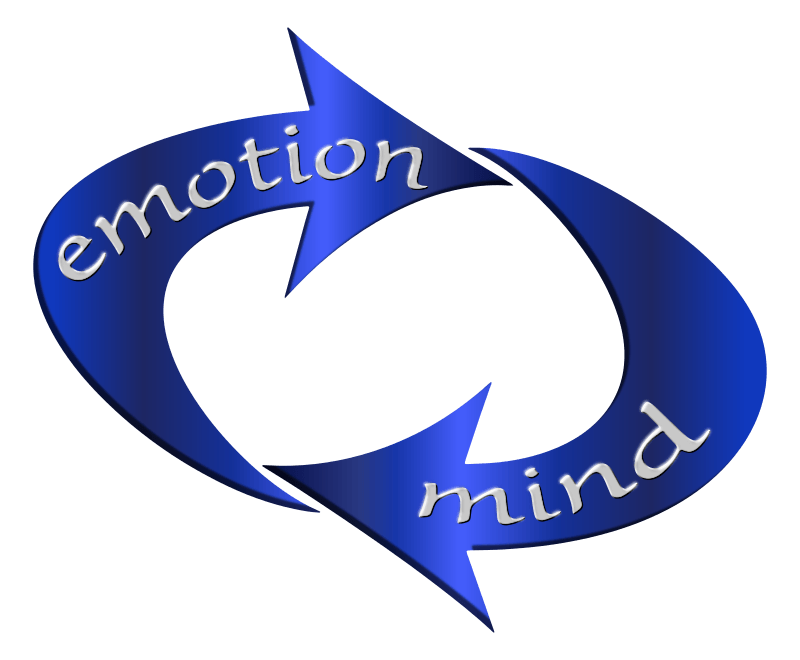 While you are not responsible for every emotion triggered by a stimulus (internal or external), typically you can choose the feelings to hang onto long term since your brain creates feelings to explain what it thinks the emotions mean. To change the way you feel you must change the way you think—as feelings follow thoughts. If you do not like the way you feel, change the way you think and what you tell yourself.
While you are not responsible for every emotion triggered by a stimulus (internal or external), typically you can choose the feelings to hang onto long term since your brain creates feelings to explain what it thinks the emotions mean. To change the way you feel you must change the way you think—as feelings follow thoughts. If you do not like the way you feel, change the way you think and what you tell yourself.
High EQ skills help you identify Core Emotions quickly and accurately, recognize the information they are providing, manage them effectively, and carefully select the actions you choose to exhibit. These skills also help you evaluate a situation quickly and accurately and determine what action (if any) is needed. You learn to estimate how much a given event or situation will matter in twelve months. If the probability is high, start problem-solving immediately. If low, open your mind’s door and let it go. 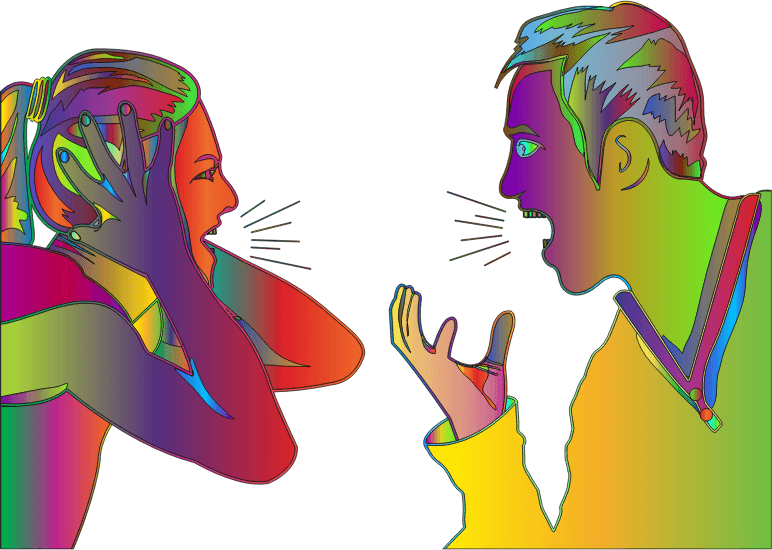 When asked for your opinion, high EQ skills allow you not only to share as honestly and graciously as possible, but also to remain relatively indifferent as to whether your opinion is even accepted. This helps you avoid arguing or even badgering others to embrace your perspective. No one brain knows everything, so input from differing brains can increase the likelihood of a more optimum solution.
When asked for your opinion, high EQ skills allow you not only to share as honestly and graciously as possible, but also to remain relatively indifferent as to whether your opinion is even accepted. This helps you avoid arguing or even badgering others to embrace your perspective. No one brain knows everything, so input from differing brains can increase the likelihood of a more optimum solution.
Emotional intelligence is the ability to harness emotions and apply them to tasks like thinking and problem-solving. A high EQ mind maintains its composure whatever the situation, whether it is being glorified or vilified.
―Pearl Zhu
5th –
Many adults are thought to operate from the beliefs, attitudes, perceptions, and expectations (including socialization) that were subconsciously absorbed by the age of five. This includes Core Emotions, the subsequent feelings created, as well as the behaviors linked with them. The subconscious mind—which is estimated to be 80 percent of your brain and your entire body—finds it easier to continue doing what is familiar and self-protective even if it is uncomfortable and less successful in the long term.  Studies have shown that 95 percent or more of a person’s decisions, actions, and behaviors come from the programming in their subconscious mind (e.g., the portion below the waterline of an iceberg). This helps to explain how individuals can sabotage their goals and not even be aware of what they are doing.
Studies have shown that 95 percent or more of a person’s decisions, actions, and behaviors come from the programming in their subconscious mind (e.g., the portion below the waterline of an iceberg). This helps to explain how individuals can sabotage their goals and not even be aware of what they are doing.
| It is much easier to teach EQ skills to children than to try to help broken adults heal . . . |
Remember there are likely as many neurons in your gut (GI Tract) as there are in your brain. There are also neurons in your heart and your solar plexus and who knows where else. Learning new EQ skills requires conscious thought and actions. Living a balanced Longevity Lifestyle can help you stay aware and alert, consciously choosing the behaviors and actions you exhibit rather than reactively shooting from the hip and creating messes that may or may not be able to be cleaned up. As Paul Auster put it, “Adolescence feeds on drama.” EQ skills help you avoid adolescent drama—sometimes even during adolescence! The brain will likely take until late twenties or early thirties before being considered “mature”—although it can continue to mature and gain wisdom over a lifetime.
There can be a HUGE difference between behaviors in individuals with low EQ versus high EQ. Here are examples. As you read through them, ask yourself: As an individual whom would you prefer to have as a partner or best friend? As an employer, whom would you want to hire? As with water, EQ seeks its own level. Build high EQ skills if you want to be attractive to and attracted by those with high EQ.
| High EQ Skills | Low EQ Skills |
| Satisfied Aware Balanced Peaceful Balanced self-worth Happy (thankful) Motivated Contented Connected Calm Interdependent Energetic Perceive success |
Frustrated Unaware Unstable Restless Low self-worth Unhappy (sad) Dejected Angry Lonely Stressed Dependent Tired Perceive failure |
Emotional competence is the single most important personal quality that each of us must develop and access to experience a breakthrough. Only through managing our emotions can we access our intellect and our technical competence. An emotionally competent person performs better under pressure.
—Dave Lennick

Reminder: Drink a glass of water. Listen to Chapter 3 of “Just the Facts.” If possible, walk around the room while you listen. At least walk in place.
6th –
Low levels of EQ skills contribute to all manner of messes that generally need to be cleaned up. Whether they really are ever cleaned up is an entirely different matter.  Three common behaviors represent low EQ and contribute heavily to conflict and misunderstandings. Some estimate that these behaviors may account for 75 percent or more of preventable conflict. Becoming more aware—getting your head out of the proverbial sand—can be empowering.
Three common behaviors represent low EQ and contribute heavily to conflict and misunderstandings. Some estimate that these behaviors may account for 75 percent or more of preventable conflict. Becoming more aware—getting your head out of the proverbial sand—can be empowering.  Taylor has defined these as JOT behaviors:
Taylor has defined these as JOT behaviors:
- Jumping to conclusions that may be way off base and out in left field
- Overreacting and creating an emotional tsunami that can blow out a bridge and ruin a relationship
- Taking things personally when it may have—or had—nothing to do with you
Never react emotionally to criticism. Analyze yourself to determine whether it is justified. If it is, correct yourself. Otherwise, go on about your business.
—Norman Vincent Peale
You can minimize JOT behaviors by implementing AAA behaviors—which help to build EQ skills. AAA is the antidote to JOT behaviors.
- Ask questions to clarify—instead of jumping to an erroneous conclusion
- Act calmly as you assess the situation—to prevent a destructive emotional tsunami
- Alter your perception or reframe the event—to avoid taking things personally
For every minute you remain angry, you give up sixty seconds of peace. If we lack emotional intelligence, whenever stress rises the human brain switches to autopilot and has an inherent tendency to do more of the same, only harder. Which, often, is precisely the wrong approach in today’s world.
—Robert K. Cooper, PhD
7th –
| Emotional intelligence is the difference that makes a difference. |
Understanding willpower and knowing how to use it effectively can be immensely helpful when building and utilizing EQ skills. Willpower is a function of the prefrontal cortex (directly behind your forehead), a portion of the brain believed to be completed by the mid- to late-twenties. Although it may be easier to access willpower after that age and implement it consistently from that point onward, hopefully you have been developing and honing your decision-making and willpower skills since childhood. Willpower rarely works well—if at all—to deprive yourself of something you already do for gratification, like trying to end a bad habit, especially one that involves addictive behaviors. Rather, it is designed to give you energy and perseverance to attain a specific goal, like hit a target and maintain or exceed it. It can help you create a new behavior or develop a healthier replacement behavior for one resulting in undesirable outcomes.
Learn to identify and experience all emotions. You can do this without “emoting” reactively or even taking any immediate action.  Sometimes you just view things in a new way—like seeing something through a magnifying glass—that can help you avoid similar situations in the future or choose to respond differently to those that cannot be avoided. Learn to recognize the information each emotion is trying to convey. Once you identify the emotion and get the information, use willpower to let the emotion go. It was just a signal, a messenger. Then choose an appropriate course of action that will give you positive outcomes. Sometimes that is doing nothing now but knowing what you will do or say in the future should a similar situation arise.
Sometimes you just view things in a new way—like seeing something through a magnifying glass—that can help you avoid similar situations in the future or choose to respond differently to those that cannot be avoided. Learn to recognize the information each emotion is trying to convey. Once you identify the emotion and get the information, use willpower to let the emotion go. It was just a signal, a messenger. Then choose an appropriate course of action that will give you positive outcomes. Sometimes that is doing nothing now but knowing what you will do or say in the future should a similar situation arise.
Willing yourself NOT to do something puts the thing you don’t want to do in Working Memory and you think constantly about it, which tends to increase the behavior.
—Daniel M. Wegner, PhD

Reminder: Drink a glass of water. Watch the short Birds & Brains video. Stand and walk in place for at least part of the video.
Practical Applications
- Many label emotions as problems. They are simply signals for you to interpret.
 Use each of the protective emotions (Anger, Sadness, Fear) as you would a highway construction cone. You identify it, pay attention, slow down, evaluate the situation, and respond in a way that will result in positive outcomes. You never pick up the cone and carry it away with you. (At least you are never supposed to do that!)
Use each of the protective emotions (Anger, Sadness, Fear) as you would a highway construction cone. You identify it, pay attention, slow down, evaluate the situation, and respond in a way that will result in positive outcomes. You never pick up the cone and carry it away with you. (At least you are never supposed to do that!) - Individuals with high EQ tend to exhibit the following eight behaviors. You may want to start with the first one and as you build those skills, move on to the others, one by one. Picture in your mind’s eye another lightbulb going “on” in your brain each time you make progress on learning another EQ skill.
 Able to identify, accurately label, assess the level of intensity, and express emotions appropriately. Metaphorically you do not need to be hit over the head with the emotion to recognize and identify it.
Able to identify, accurately label, assess the level of intensity, and express emotions appropriately. Metaphorically you do not need to be hit over the head with the emotion to recognize and identify it.- Able to recognize what the emotion is trying to communicate to you. Each emotion is designed to provide you with information related to a specific type of situation. (e.g., Life is good, Boundary breaches, Bona fide danger, Loss)
- Able to delay gratification and exhibit good impulse control. The ability to be able to “wait” for something you want impacts everything you do in life, including what you eat and drink and do—ad infinitum.
- Able to articulate the difference between recognizing and identifying a specific emotion and obtaining the information and acting based on that emotion. Sometimes the preferred course is to take no immediate action at all but to listen and learn for the future.
- Listen, read, and interpret social cues to better understand the perspective of others—regardless of agreement. Each brain is unique and only has its own opinion. You can be respectful even if you agree to disagree.
- Exhibit effective verbal and nonverbal skills along with appropriate empathy and compassion. You can exhibit empathy and still get the job done, while also maintaining appropriate boundaries.
- Able to manage your own feelings and moods effectively. A mood is just a feeling that you hang onto for a long time. You know how to change the way you feel by changing the way you think. And you activate willpower to do so.
- Able to handle relationships effectively, minimizing JOT behaviors and replacing them with AAA behaviors.
 Briefly analyze every situation that involves emotions—especially when you do a JOT behavior. Replay the situation in your mind’s eye, and when you get to the part where you reacted in an undesirable manner, select the AAA response that would be more appropriate and effective. Re-record the response you want to exhibit next time.
Briefly analyze every situation that involves emotions—especially when you do a JOT behavior. Replay the situation in your mind’s eye, and when you get to the part where you reacted in an undesirable manner, select the AAA response that would be more appropriate and effective. Re-record the response you want to exhibit next time.
| We don’t see things as they are; we see them as we are. —Anais Nin |
Rehearse the new picture in your mind’s eye and follow it next time. In addition to helping your minimize conflict, high EQ skills can help protect you from developing or getting stuck in some dysfunctional relationships—within your extended family, among casual and close friends, and at work, school, church, or club.
It can be proven that wounded people wound others. Walk circumspectly among wounded people, their injuries are deeply submerged in their brain's amygdala, and without the time-tested practice of Emotional Intelligence (EQ), you might find yourself scarred by association. Give your associations time to reveal their EQ or lack thereof.
—Tracey Bond

Reminder: Drink a glass of water as you dig into this last section. How are you choosing to apply this information practically in your everyday life?
Think & Do
- What are the four Core Emotions outlined in this module?

What type of information is each Core Emotion designed to give you?
Which protective emotion is the most difficult for you to manage appropriately? - What are the three common JOT behaviors that represent low levels of EQ and that tend to contribute to most of the conflict in personal and professional relationships?
Which JOT behavior do you tend to use most often? - What three AAA behaviors are an antidote to JOT behaviors?
Have you used any of these AAA replacement behaviors when you find yourself in the middle of a common JOT behavior?
Studies have shown that EQ is a learnable intelligence and can be developed and increased at any age. It is worth 80 percent of your overall success in life. The goal is to recognize when you are in the middle of a JOT behavior and course correct quickly by switching to an AAA behavior. Eventually you can catch yourself before you even begin a JOT behavior and ask yourself whether you really want to go down that road again. Hone your EQ skills daily to help you manage core emotions successfully. Make a game of it! It is one in which you can win!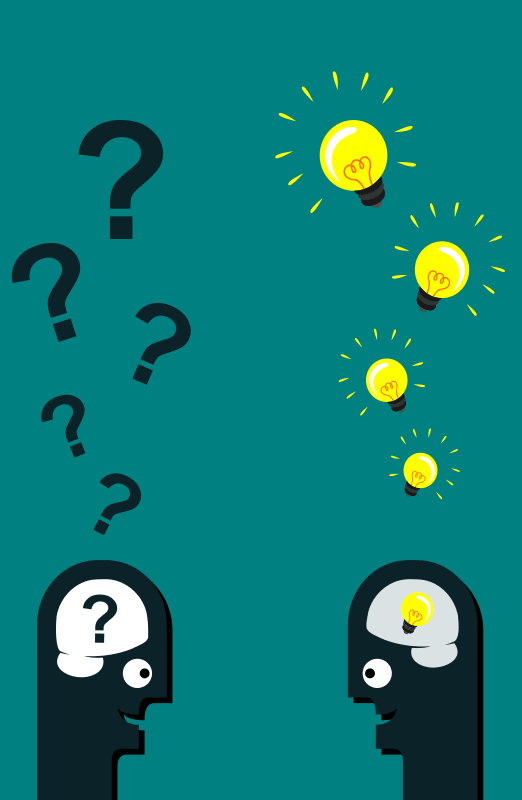
- How do you handle the opinions of others when they differ from yours?
What you do with the opinion of others reflects your level of EQ or Emotional Intelligence. You can exhibit JOT behaviors or realize that their comments are just their brain’s opinion. Pick them up blindly and run with them or learn what there is to learn (if anything) and let them go. It is your choice.
Realize that now, in this moment of time, you are creating. You are creating your next moment based on what you are feeling and thinking. That is what’s real.
—Doc Childre
Slow & Steady Wins
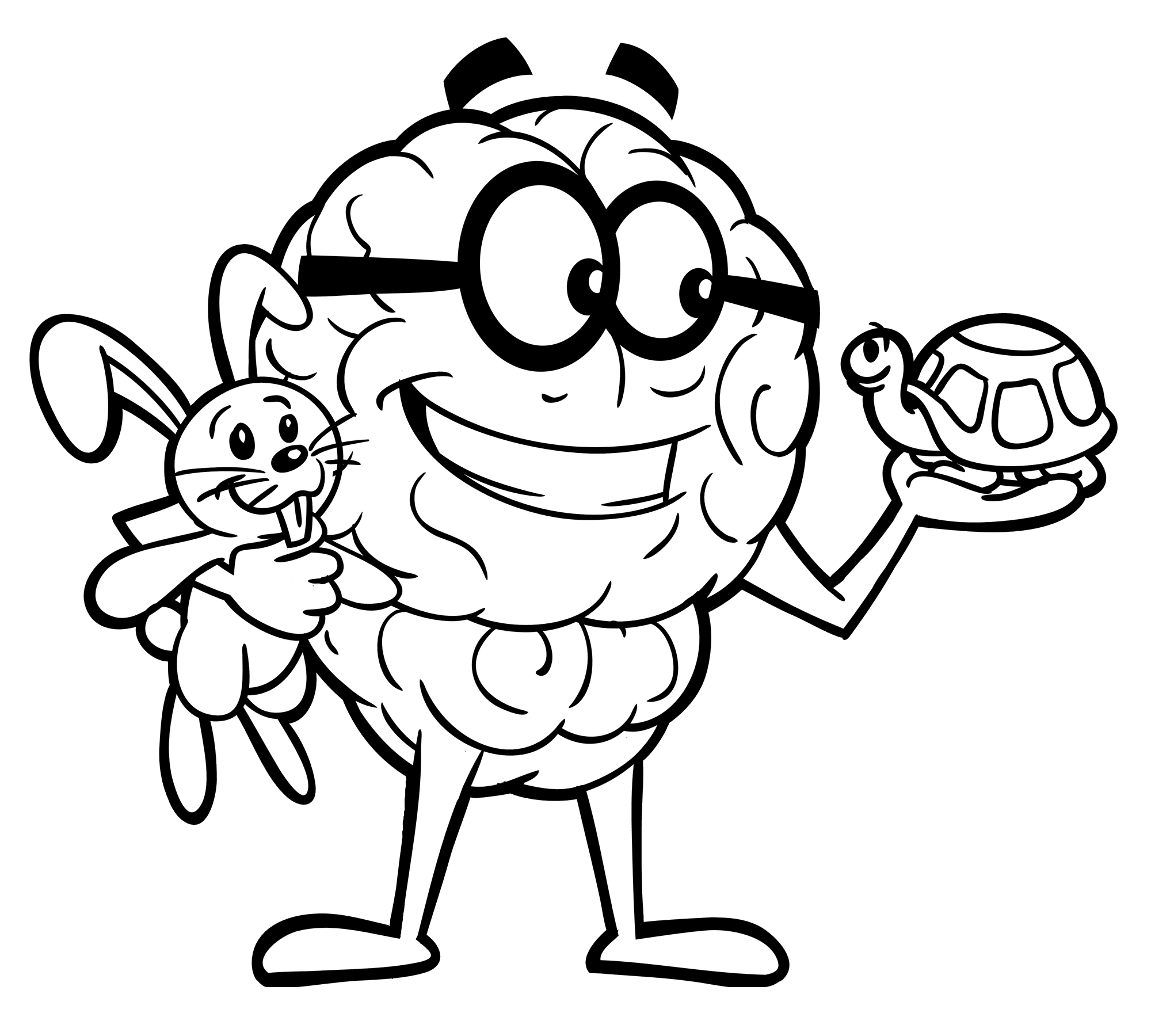 Concentrate on Module 2 during this entire week. Reread the Facts; do your Daily Goals; relisten to the Videos and audiobook excerpts. It takes the average adult four times through to really absorb the material and turn it into a new behavior. If you want positive results, rushing through the material just because you can, may not provide the desired outcome.
Concentrate on Module 2 during this entire week. Reread the Facts; do your Daily Goals; relisten to the Videos and audiobook excerpts. It takes the average adult four times through to really absorb the material and turn it into a new behavior. If you want positive results, rushing through the material just because you can, may not provide the desired outcome.
Practice, practice, practice EQ skills. Review Think & Do from Module 1 to help reinforce remembering. Get plenty of sleep so your brain has time to consolidate or transfer what you are learning from short-term to long-term memory. Drink plenty of water to keep your brain hydrated and able to generate the mental energy you need. Your thinking cells—called neurons—are estimated to be about 85 percent water. Dehydration is deadly in brain central.
Use what you have been learning: Can-do Mindset and Positive Self-talk to help you make a plan for honing EQ skills. Then access Willpower to help integrate them into your lifestyle.
Every day ask yourself the question: Do I want to experience peace of mind, or do I want to experience conflict?
—Gerald Jampolsky, MD
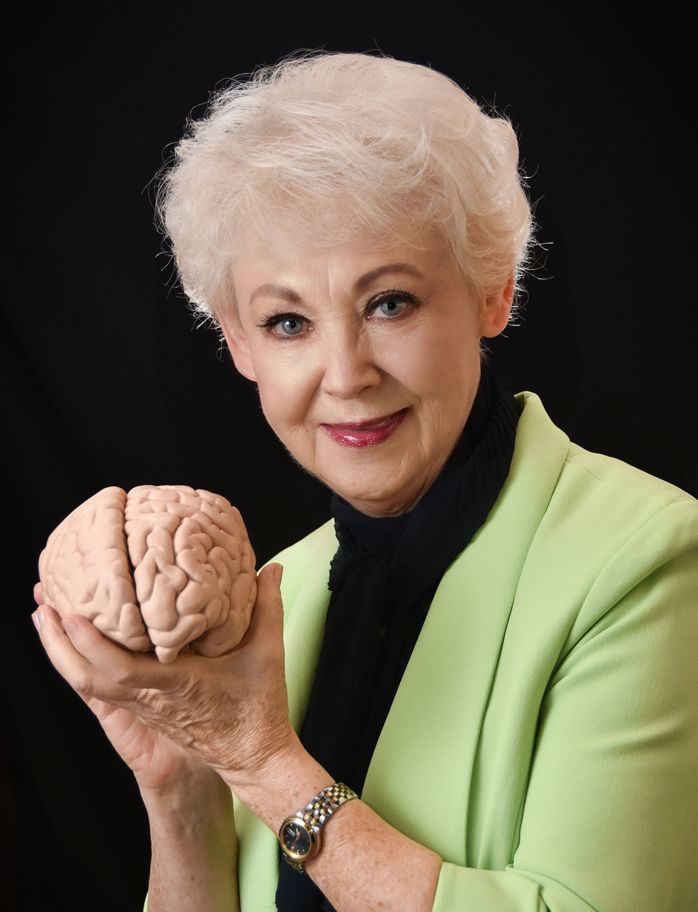 See you next week for LLM Online Module 3
See you next week for LLM Online Module 3
Topic:
Mental & Physical Exercise—Use them or lose them!
Lesson List
- Module 2 – Emotional Intelligence (EQ)
- Module 2 – To Begin
- Module 2 – Slow & Steady Wins
- Module 1 – Mindset and Self-talk
- Module 1 – To Begin
- Module 1 – Slow & Steady Wins
- Module 1 – Mindset (educational video)
- Module 1 – Birds & Brains (video)
- Module 1 – Just the Facts - Chapter 1 (audio)
- Module 1 – Just the Facts - Chapter 2 (audio)
- Module 2 – EQ (Emotional Intelligence) (video)
- Module 2 – Just the Facts - Chapter 3 (audio)
- Module 4 – Sleep
- Module 4 – To Begin
- Module 4 – Slow & Steady Wins
- Module 3 – Mental & Physical Exercise
- Module 3 – To Begin
- Module 3 – Slow & Steady Wins
- Module 5 – Water
- Module 5 – To Begin
- Module 5 – Slow & Steady Wins
- Module 6 – Safety
- Module 6 – To Begin
- Module 6 – Slow & Steady Wins
- Module 7 – Sunlight
- Module 7 – To Begin
- Module 7 – Slow & Steady Wins
- Module 8 – Nutrition
- Module 8 – To Begin
- Module 8 – Slow & Steady Wins
- Module 10 – Support Network
- Module 10 – To Begin
- Module 11 – Stressors
- Module 10 – Slow & Steady Wins
- Module 9 – Laughter
- Module 9 – To Begin
- Module 11 – To Begin
- Module 9 – Slow & Steady Wins
- Module 11 – Slow & Steady Wins
- Module 12 – Life Satisfaction
- Module 12 – To Begin
- Module 12 – Slow & Steady Wins
- Module 2 — Birds & Brains, No. 2 - EQ (video)
- Module 3 – Exercise (educational video)
- Module 3 – Just the Facts - Chapter 4 (audio)
- Module 3 – Just the Facts - Chapter 5 (audio)
- Module 3 – Birds & Brains, No. 3 - Exercise (video)
- Module 4—Just the Facts - Ch. 6 (audio)
- Module 4—Birds & Brains #4 (video)
- Module 4—Sleep (educational video)
- Module 5—Water (educational video)
- Module 5 – Just the Facts - Chapter 7 (audio)
- Module 5 — Birds & Brains #5 (video)
- Module 6 – Safety (educational video)
- Module 6 – Just the Facts - Chapter 8 (audio)
- Module 7 – Birds & Brains #7 (video)
- Module 8 – Just the Facts - Chapter 10 (audio)
- Module 8 – Nutrition (educational video)
- Module 8 – Birds & Brains #8 (video)
- Module 7 – Just the Facts - Chapter 9 (audio)
- Module 6 — Birds & Brains #6 (video)
- Module 7 – Sunlight (educational video)
- Module 9 – Laughter (educational video)
- Module 9 – Just the Facts - Chapter 11 (audio)
- Module 9 – Birds & Brains #9 (video)
- Module 10 – Support Systems (educational video)
- Module 10 – Just the Facts - Chapter 12 (audio)
- Module 10 – Birds & Brains, No. 10 - Support Systems (video)
- Module 11 – Stressors (educational video)
- Module 11 – Just the Facts - Chapter 13 (audio)
- Module 11 – Birds & Brains No. 11 - Stressors (video)
- More Information
- Module 12 – Life Satisfaction (educational video)
- Module 12 – Birds & Brains, No. 12 - Life Satisfaction (video)
- Module 12 – Just the Facts - Chapter 14 (audio)
Teachers Info

Arlene R. Taylor, PhD
- Specialist:
- Website: https://www.arlenetaylor.org/
-
Arlene R. Taylor PhD, a leading speaker on brain function, is sometimes referred to as the brain guru. She specializes in simplifying this complex topic, with the goal of helping individuals understand more about the brain in general and their own in particular. She delights in helping others learn how to thrive by...

